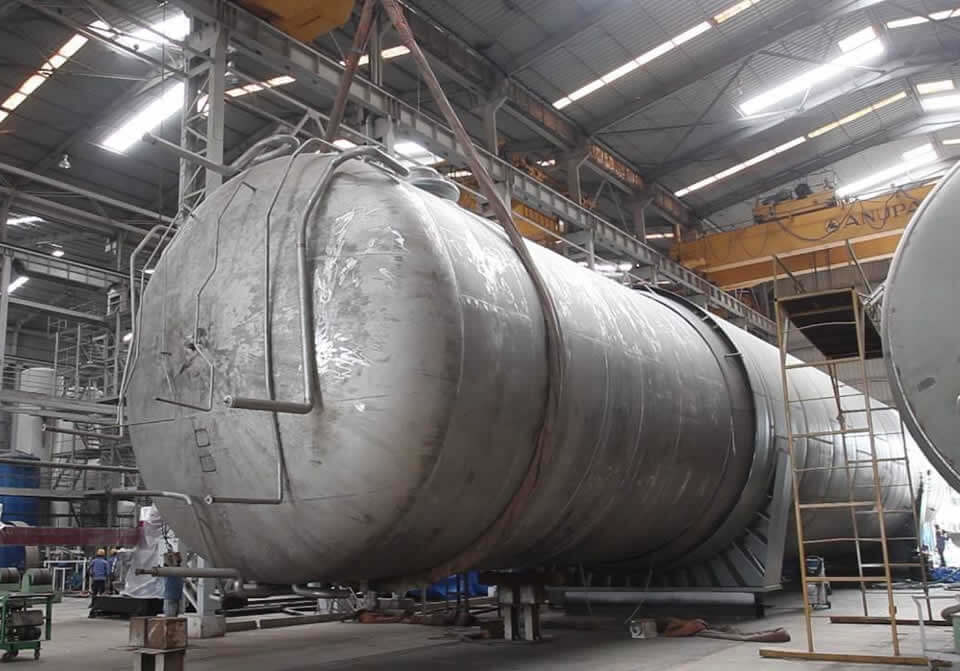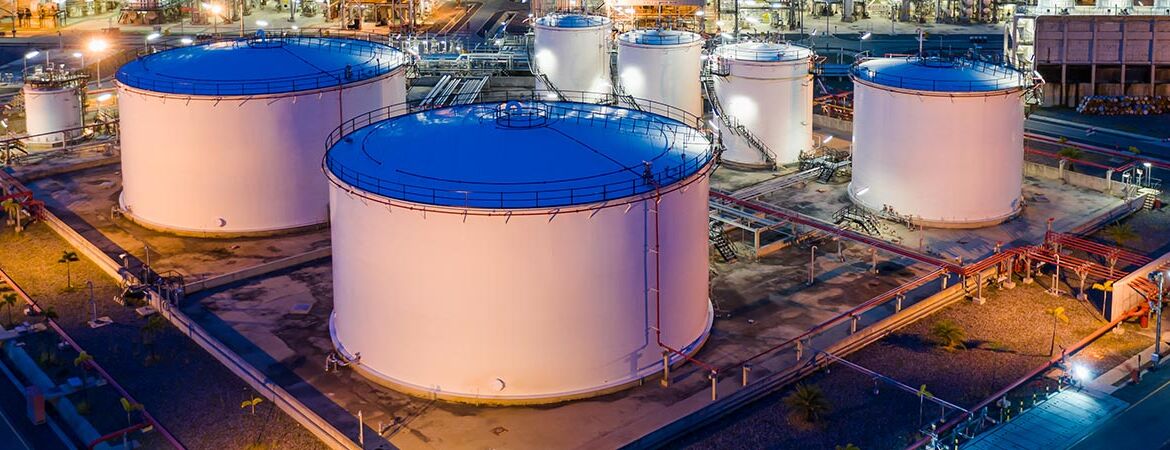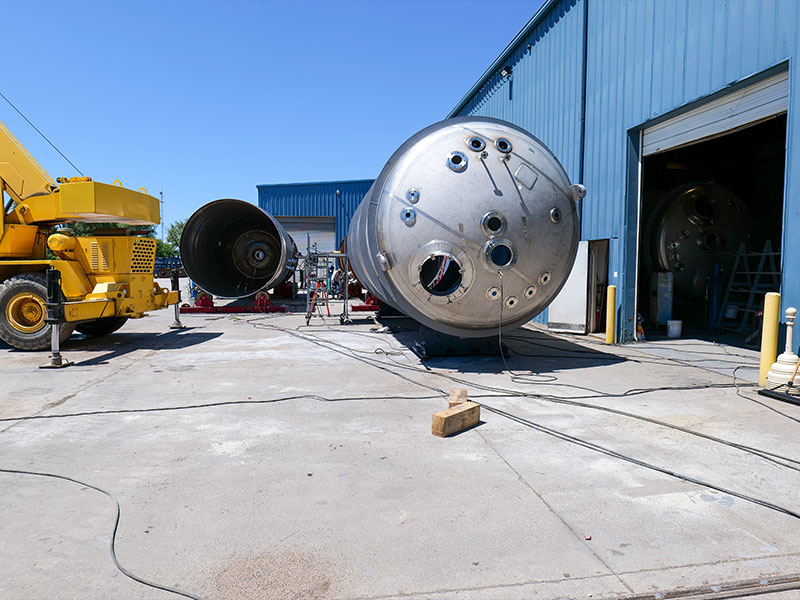The Future of Storage Tank Manufacturing: Patterns and Technologies to See
The storage tank manufacturing industry gets on the cusp of a critical evolution, driven by arising trends in clever products, automation, and sustainability. As sectors significantly focus on environmental responsibility, technologies such as environmentally friendly composites and IoT-driven monitoring systems are reshaping operational standards. Additionally, the growing demand for customization and modular layouts recommends a shift towards more versatile production techniques. Recognizing these fads not only highlights the difficulties in advance yet also exposes chances that could redefine the landscape of storage tank production in the coming years. What effects might these advancements hold for industry stakeholders?
Innovations in Smart Materials
Recently, the storage tank manufacturing industry has experienced a significant uptick in the fostering of smart materials, transforming style and functionality. Smart products, which can react dynamically to environmental changes, have enabled manufacturers to produce storage tanks that are not just extra durable but also extra reliable in their operational capabilities.
One noteworthy innovation is the integration of shape memory alloys and polymers that can adjust to varying stress and temperatures. This flexibility boosts the architectural stability of tanks, lowering the threat of failings and leakages (Texas Oil & Gas Storage Tank Fabrication Authority). Furthermore, these materials commonly display self-healing homes, which better prolongs the life-span of tank, decreasing maintenance costs and enhancing safety
Additionally, the unification of sensors within wise products enables for real-time monitoring of tank conditions, offering essential information that assists in predictive upkeep and risk monitoring. This data-driven approach not just enhances operational efficiency yet also lines up with environmental sustainability goals by optimizing resource usage and avoiding spills.
Increase of Automation Technologies
The rise of automation innovations is changing storage tank production by integrating robotics right into manufacturing procedures, boosting performance and precision. Additionally, the deployment of smart sensors enables real-time surveillance, making certain quality control and safety standards are met. AI-driven procedure optimization even more simplifies operations, minimizing prices and improving total productivity in the market.
Robotics Integration in Manufacturing
Robotics combination is transforming the manufacturing landscape, particularly in the storage tank field. As manufacturers endeavor for increased performance and precision, robotics innovations are becoming crucial devices for streamlining production processes. Automated systems are qualified of executing repetitive tasks with better speed and accuracy than human labor, reducing the possibility of errors and improving general product top quality.
One of the key advantages of robot combination is the capacity to optimize process. Automated robot arms can manage hefty products, weld elements, and conduct inspections, which minimizes physical strain on workers and lowers downtime. This change not just improves safety yet likewise enables human employees to focus on more complicated and value-added tasks.
Furthermore, robotics can promote versatile production, allowing firms to adjust quickly to changing market demands - Oil & Gas Storage Tank Fabrication. Advanced programs allows robots to easily switch over in between various tasks and items, which is particularly advantageous in a sector where personalization is significantly desired
As robotics modern technology remains to develop, manufacturers can expect enhanced capabilities, consisting of enhanced machine discovering algorithms and increased fact applications, better driving performance in storage tank production and establishing brand-new requirements for the market.
Smart Sensors Release

Additionally, the information gathered from these sensors can be leveraged to enhance the supply chain, making certain that materials are readily available when needed while lessening waste. This level of understanding allows manufacturers to react promptly to changing conditions and consumer demands, improving overall performance.
Additionally, clever sensors contribute to enhanced governing conformity by continually guaranteeing and monitoring ecological aspects adherence to security standards. As the sector advances towards more lasting techniques, the capacity to monitor emissions and resource usage in real-time is vital.
AI-Driven Process Optimization
Manufacturers in the storage tank industry are progressively utilizing the power of AI-driven procedure optimization to enhance operational effectiveness and decision-making capacities. By integrating advanced formulas and artificial intelligence methods, companies can assess vast amounts of information generated throughout the manufacturing procedure. This data-driven strategy makes it possible for real-time monitoring of manufacturing metrics, resulting in more informed choices and prompt treatments.
AI innovations facilitate predictive maintenance, enabling manufacturers to prepare for devices failures before they happen, therefore lowering downtime and upkeep prices. In addition, these systems can maximize source allocation by examining production patterns and readjusting process, making sure that materials and labor are used efficiently.
AI-driven optimization boosts high quality control by recognizing possible defects throughout the production procedure. Automated assessments powered by AI can swiftly find incongruities, making certain that just items satisfying rigorous quality standards advance with the production line.
As the storage tank industry continues to welcome automation, AI-driven procedure optimization stands out as a transformative force, driving technology and competition. By leveraging these innovations, manufacturers can not only improve operations yet likewise adapt promptly to market needs, positioning themselves for lasting growth in an increasingly intricate production landscape.
Concentrate On Sustainability Practices
As the storage tank manufacturing sector develops, a substantial emphasis is positioned on sustainability techniques. This includes the adoption of eco-friendly materials, the execution of energy-efficient manufacturing procedures, and the assimilation of circular economic situation principles. By prioritizing these efforts, manufacturers not only lower their ecological influence but additionally enhance the long life and effectiveness of their products.
Environmentally Friendly Products Fostering
Progressively, the storage tank manufacturing industry is embracing green products as a fundamental aspect of sustainability methods. This change is driven by enhanced ecological awareness and regulatory pressures, motivating manufacturers to look for alternatives that lessen environmental impact.
Naturally degradable compounds and recycled steels are gaining grip, supplying both performance and reduced carbon footprints. For circumstances, using high-recycled-content steel not only lowers the demand for virgin products but also boosts the general sustainability of the item lifecycle. Furthermore, manufacturers are exploring bio-based materials that supply resilience while being less unsafe to the atmosphere.
Furthermore, the adoption of environmentally friendly finishings and coatings, which are without unpredictable natural substances (VOCs), reflects the market's dedication to lowering air pollution and promoting healthier working problems. These advancements not just straighten with international sustainability objectives but also satisfy the expanding market demand for greener items.
The integration of environmentally friendly products in storage tank production is not simply a pattern; it represents a positive strategy in the direction of liable manufacturing that prioritizes both environmental stewardship and economic feasibility, setting a new standard for future developments in the industry.
Energy-efficient Manufacturing Processes
There is a growing recognition within the storage tank manufacturing sector of the importance of energy-efficient procedures as a vital element of lasting techniques. As the sector faces enhancing pressure to minimize its carbon impact, manufacturers are carrying out ingenious technologies and methods targeted at lessening power consumption throughout the manufacturing cycle.
One significant fad is the adoption of advanced manufacturing methods such as lean manufacturing and automation. These techniques improve procedures, decrease waste, and enhance performance, while likewise decreasing energy use. Additionally, the assimilation of renewable resource resources, such as solar and wind power, into manufacturing facilities is coming to be much more prevalent, allowing firms to operate sustainably and decrease reliance on fossil gas.
Energy-efficient equipment and equipment are being focused on in new financial investments, as manufacturers look for to maximize their energy consumption. The usage of power management systems allows real-time surveillance and evaluation, promoting constant improvement in energy performance.
Circular Economy Assimilation
A remarkable shift in the direction of round economy integration is transforming sustainability techniques within the storage tank manufacturing market. This approach emphasizes the significance of source efficiency, waste reduction, and the recycling of products throughout the production lifecycle. By taking on round principles, manufacturers are progressively concentrated on developing containers that focus on recyclability, repairability, and durability.
As component of this modification, companies are discovering cutting-edge materials and manufacturing approaches that lessen environmental effect. The incorporation of recycled metals and plastics not only reduces the demand for virgin sources yet also lowers carbon exhausts connected with extraction and processing. Furthermore, manufacturers are implementing take-back systems that promote the repair and recycling of end-of-life storage tanks, thus shutting the loop in the production cycle.
Partnership among stakeholders, consisting of distributors and clients, is important for cultivating a round economic climate (Storage Tank Manufacturing). This partnership makes it possible for the sharing of ideal methods and encourages the growth of sustainable supply chains. Eventually, integrating circular economic climate principles right into storage tank manufacturing not only improves environmental stewardship yet additionally placements firms to satisfy evolving governing criteria and customer expectations for sustainability
Enhanced Safety And Security Protocols
In today's production landscape, improved safety procedures have come to be essential for storage tank manufacturers. The market faces boosting governing examination and demands for higher safety standards due to the prospective risks connected with the storage space of unsafe products. Consequently, manufacturers are taking on a diverse technique to boost safety steps throughout the production process.
One substantial growth is the implementation of innovative danger evaluation tools that recognize possible hazards during the layout and production phases. These devices facilitate aggressive steps to minimize risks prior to they intensify right into critical issues. Manufacturers are spending in employee training programs that highlight safety methods, ensuring that all personnel are fluent in emergency procedures and devices handling.
Furthermore, there is a growing focus on making use of high-grade products and ingenious layouts that enhance architectural integrity and reduce the possibility of leakages or failings. Regular maintenance checks and extensive screening protocols are likewise being incorporated into the production lifecycle to assure conformity with security laws.
Integration of IoT Solutions

IoT tools help with predictive upkeep, which reduces downtime and expands the life expectancy of storage space tanks. By analyzing data collected from sensors, manufacturers can perform and foresee possible failures maintenance tasks prior to vital concerns occur. This proactive strategy not only conserves prices however also assures compliance with safety and security policies.
Additionally, IoT integration sustains better supply management by providing exact, real-time information on stored products. Texas Oil & Gas Storage Tank Fabrication Authority. This capability assists manufacturers optimize their supply chains, ensuring that required sources are offered when required, thereby boosting total efficiency
The implementation of IoT solutions enables improved interaction between containers and centralized management systems, simplifying operations. As the storage tank manufacturing industry proceeds to take on IoT technologies, we can anticipate considerable innovations in safety protocols and functional effectiveness, inevitably bring about even more resilient manufacturing practices.
Customization and Modular Layout
Versatility in design has actually become a foundation of contemporary storage tank manufacturing as personalization and modular design alternatives gain traction. The developing requirements of sectors such as oil and gas, chemicals, and water administration demand tailored options that suit specific functional requirements. Modification allows manufacturers to create storage tanks that satisfy unique requirements relating to size, shape, product, and performance, making sure peak performance and efficiency.
Modular style, on the other hand, permits for the assembly of pre-fabricated components, leading to substantial time and cost savings. This strategy assists in fast deployment and scalability, making it possible for companies to adjust their storage space capacities in response to changing demand. In addition, modular systems can be conveniently increased or reconfigured, lessening downtime and enhancing functional flexibility.
The combination of advanced manufacturing innovations, such as 3D printing and computer-aided design (CAD), additional enhances personalization possibilities. These advancements allow precise design and fast prototyping, permitting fast changes and versions during the layout process.

Regulatory Changes and Conformity
Regulative adjustments and compliance needs often form the landscape of storage tank manufacturing, compelling manufacturers to stay adaptable and vigilant. With increasing environmental issues and the promote lasting methods, regulative bodies are applying stricter standards concerning discharges, products, and safety and security standards. As an example, the united state Epa (EPA) and various state firms are changing laws that regulate the design and setup of storage tanks, especially those utilized for unsafe compounds.
Manufacturers have to not only adhere to existing guidelines however likewise anticipate future changes, demanding continuous financial investment in research study and growth. This consists of adopting innovative products and technologies that enhance tank stability and ecological security. In addition, compliance with guidelines such as the Spill Prevention, Control, and web link Countermeasure (SPCC) regulation is important for manufacturers to avoid large penalties and legal obligations.
In addition, the assimilation of electronic innovations promotes conformity surveillance and coverage, enabling manufacturers to maintain openness and efficiency. As policies continue to evolve, remaining educated and aggressive is vital for storage tank manufacturers to ensure conformity, safeguard public wellness, and protect the atmosphere, eventually forming a more sustainable industry.
Regularly Asked Concerns

What Are the A Lot Of Typical Materials Made Use Of in Storage Tank Manufacturing?
One of the most typical materials utilized in storage tank manufacturing consist of carbon steel, stainless steel, and fiberglass. Each material offers distinct advantages, such as resilience, corrosion resistance, and adaptability to different storage space demands and ecological problems.
Just How Do Storage Space Storage Tanks Influence Local Ecosystems Throughout Setup?
Storage space storage tank installment can interrupt local communities by modifying land use, affecting water drainage patterns, and possibly introducing toxins. Proper site analyses and ecological management techniques are important to minimize these effects and safeguard biodiversity.
What Is the Ordinary Life Expectancy of a Modern Storage Tank?
The typical life-span of a contemporary storage tank usually varies from 20 to thirty years. Elements such as material quality, ecological conditions, and maintenance techniques significantly influence durability and total performance throughout their functional life-span.
How Do Manufacturers Guarantee Top Quality Control in Production?
Manufacturers assure quality control with extensive testing methods, adherence to industry requirements, and continuous monitoring throughout production (Oil & Gas Storage Tank Fabrication). Advanced modern technologies such as automation and real-time data analysis additionally boost uniformity and reliability in storage tank production processes
What Are the Costs Connected With Preserving Storage Storage Tanks?
Preserving tank includes various prices, including regular evaluations, repair work, governing compliance, deterioration avoidance, and potential environmental removal. These costs can considerably influence general operational spending plans and necessitate positive monitoring to assure long-lasting performance and safety.
As manufacturers increasingly welcome automation innovations, the deployment of clever sensing units is ending up being a crucial facet of modern production processes in the storage container sector. Manufacturers in the storage tank market are progressively taking advantage of the power of AI-driven process optimization to enhance operational effectiveness and decision-making abilities. Significantly, the storage container manufacturing sector is welcoming environment-friendly materials as a fundamental aspect of sustainability practices. In today's manufacturing landscape, boosted safety procedures have ended up being necessary for storage container manufacturers. Regulatory changes and compliance demands frequently form the landscape of storage tank production, engaging manufacturers to continue to be watchful and versatile.